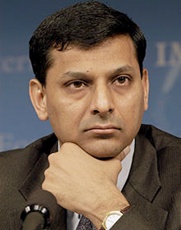RBI keeps rates unchanged, eye on Budget
02 Feb 2016
After its first bi-monthly monetary policy meeting of 2016, the Reserve Bank of India (RBI) today left the key repo rate, along with cash reserve ratio and statutory liquidity ratio, unchanged.
 As expected by economists, the RBI left the repo rate unchanged at 6.75 per cent, saying it would want to wait for more inflation data and the Union Budget before taking action, even as it said it would continue to remain "accommodative".
As expected by economists, the RBI left the repo rate unchanged at 6.75 per cent, saying it would want to wait for more inflation data and the Union Budget before taking action, even as it said it would continue to remain "accommodative".
It also left the cash reserve ratio and statutory liquidity ratio unchanged, despite concerns that liquidity is tight in the system.
The benchmark repo rate is the rate at which banks borrow short term funds requirement from the RBI. This forms the basis for commercial banks to set their interest rates. Any cut in the repo rate should ideally translate into a corresponding cut in interest rates on home loans and other loans.
However banks take time in transmitting RBI's cut, due to various factors, including lack of adequate capital for banks and mounting bad debts.
In its monetary policy statement, the Reserve Bank said the Indian economy was plodding along well, but that it would take into consideration steps taken in the Budget to boost growth while keeping inflation in check.
The RBI also said it will keep the cash reserve ratio (CRR) of scheduled banks unchanged at 4 per cent of net demand and time liability.
''Inflation has evolved closely along the trajectory set by the monetary policy stance. Going forward, under the assumption of a normal monsoon and the current level of international crude oil prices and exchange rates, inflation is expected to be inertial and be around 5 per cent by the end of fiscal 2016-17.
''However, the implementation of the VII Central Pay Commission award, which has not been factored into these projections, will impart upward momentum to this trajectory for a period of one to two years. The Reserve Bank will adjust the forecast path as and when more clarity emerges on the timing of implementation,'' it said.
"The Indian economy is currently being viewed as a beacon of stability because of the steady disinflation, a modest current account deficit and commitment to fiscal rectitude," the central bank said. "This needs to be maintained so that the foundations of stable and sustainable growth are strengthened."
In reaction to the meet, equity shares and the rupee fell a bit while bond yields rose.
Since assuming office as RBI Governor in September 2013, Dr Raghuram Rajan spent the first half of his three-year tenure trying to battle inflation by keeping interest rates high. Starting last year, the central bank cut rates by a total of 125 basis points.
The RBI added that it was on course to meet its January 2016 target of keeping consumer inflation below 6 per cent, though it upped its January 2017 target from 4.8 per cent earlier to 5 per cent - subject to upward risks arising out of the Pay Commission awards rollout.
For fiscal year 2016, the RBI said it expects growth to come in at 7.4 per cent with downside risks. For the next fiscal, it said growth is expected to increase to 7.6 per cent.
'Ample liquidity'
At the press conference following the meet, Dr Rajan argued that liquidity was not as tight as believed by some, and said the Reserve Bank had injected ample liquidity through repos and open market operations and would continue to monitor the situation.
"The RBI has put the responsibility [for more rate cuts] in the hands of the government," HSBC Chief India Economist Pranjul Bhandari told CNBC-TV18, underlining Rajan's frequent calls recently, including today, that the government should not breach its fiscal deficit threshold of 3.9 per cent of GDP in FY16.
While Finance Minister Arun Jaitley has also said he is clear about meeting the fiscal deficit target, others have called upon the government to consider letting its deficit widen and using more borrowing to boost growth. (See: Jaitley can afford to let deficit widen: Survey).
While advocates of accommodative fiscal policy argue that the government can afford to have a higher deficit, given the benign global commodity situation (which would ease pressure on import bills and trade deficit), critics such as Dr Rajan have said pursuing such a policy is not worth the risk.





.webp)
















